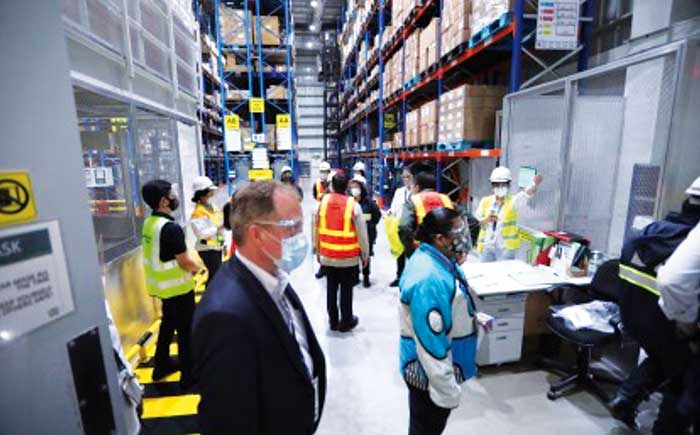The cold chain industry in the Philippines will continue to grow at a rate of 8 to 10 percent annually over the next five years.
Logistics players, meanwhile, are increasingly using multi-warehousing and mobile hubs as a strategy in meeting last-mile deliveries.
Anthony Dizon, president of Cold Chain Association of the Philippines, said in a forum announcing the investment of Fast Group in cold chain facilities, said the growth will be
largely driven by population growth, shifting consumer preferences for frozen products, and access to regional export markets with the opening of Asean economic community.
Dizon said the Philippines has a cold chain capacity of 550,000 pallet positions or the equivalent of 500,000 tons
“While we do have adquate capacity in urban areas, there is observed need for additional facilities in other parts of the country not served because of limitations,” said Dizon.
He said studies have shown there are specific locations where cold chain facilities are critical for economic progress and that players are looking into these for possible investments.
Despite recent challenges posed on food supply like the African swine fever that boosted meat importation and the pandemic that required the transport and storage of vaccines Dizon said the cold chain industry has responded well to these challenges.
“We are optimistic that the traditional factors of population increase, economic recovery etc. will go hand in hand with new normal and directly contribute to the continuing growth of the cold chain industry,” Dizon said.
In a separate forum held yesterday in line with the Davao Icon business conference set next month,
Tatiana Cziomer, chief operations officer of Etaily, multi-warehousing strategy enables logistics players fulfill the last-mile delivery within a day especially for big marketplaces whose shipments will come from a warehouse in Metro Manila going to say Mindanao.
“That (used) take a bit longer for the goods to come to (the customer) but now we’re seeing a lot of multi- warehousing setup to deliver the goods, move it a lot faster and deliver it a lot faster,” Cziomer said.
Sabina Lopez-Vergara, chief commercial officer of Ninja Van, in the same forum said companies are tapping smaller businesses and mobile hubs, even trucks, for easy access of riders who do not have to go to a bigger, physical location.
Vergara said the flexibility provided by this strategy plays a key role in the consolidation of shipments especially for small items.
“A lot of these is really driven by speed and by open communication, with customers and shippers on things like updated statuses, real time statuses and improving how logistics companies operate,” she said.
Vergara said logistics is a lot different now than it was 10 years ago when electronic commerce was just starting “and it was okay for people to receive (their packages) later.
With more players coming in, deliveries are moving fast as people want to be served fast.
“It’s not just a manual operation anymore unlike before. This is why we are investing in logistics belts, conveyor belts. Even our airline industries have embraced that logistics and cargo is here to stay, e-commerce is here to stay and we need to invest ito improve the speed and the delivery services that we have,” Vergara added.
Dino Austria, customs collector for the Bureau of Customs-Davao, said all these have “ sort of pressured us to keep up in government because the private sector has really been evolving quite fast around us. “
“We don’t want to post a barrier for for the movement of goods,” said Austria who shared the agency’s recent strides in technology adoption.




